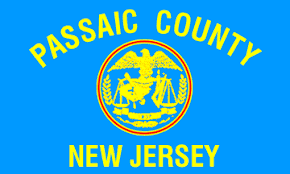Passaic, NJ: The City of Immigrants, Industry, and Unyielding Community Spirit
On the banks of the Passaic River, just 10 miles west of New York City, sits Passaic, New Jersey—a densely packed city with a history shaped by factories, families, and the flow of newcomers making their American dreams real. Known for its powerful immigrant identity, Passaic is a city where Spanish, Arabic, Bengali, and Yiddish flow through neighborhoods; where corner stores sit beside synagogues and masjids; and where resilience is stitched into every block. This isn’t a city of glass towers—but of grit, heart, and hope.
Origin and History
Passaic’s legacy is one of power—industrial, cultural, and human.
- Lenape Land: The city is located on the ancestral territory of the Lenape people, who fished and traveled along the Passaic River long before colonization.
- Early Dutch Settlement: Established in the 1600s by Dutch traders, the area developed into a key colonial hub and later industrial city.
- Incorporation: Passaic was incorporated as a city in 1873 and became a textile and manufacturing powerhouse—especially during the 19th and early 20th centuries.
- Labor & Migration: Home to waves of European immigrants, Passaic also became a landmark in labor history—including a massive 1926 textile strike led by women and immigrant workers.
Demographics
Passaic is one of the most diverse cities in the state—and proud of it.
- Population: Approx. 70,000 residents (2020 U.S. Census)
- Cultural Composition: Majority Latinx—especially Dominican, Mexican, Colombian, and Peruvian—with large Bangladeshi, Arab (Palestinian and Syrian), Orthodox Jewish, and Black communities.
- Languages Spoken: Spanish is the dominant language, with Arabic, Bengali, Yiddish, Urdu, and English also widely spoken.
- Generational Layers: Multigenerational families, recent immigrants, undocumented residents, and long-settled communities all call Passaic home.
Geographic Location and Size
Passaic is compact and well-connected to the region.
- Size: 3.2 square miles
- Borders: Adjacent to Clifton, Garfield, Wallington, and the Passaic River.
- Transit Access: NJ Transit rail and bus lines provide direct service to NYC and Newark. Major highways like Route 21 and the Garden State Parkway offer additional access.
Where We Thrive
Despite underinvestment, Passaic’s strength shows up everywhere: in schools, food, worship, and organizing.
- Public Schools: Passaic Public Schools serve a high-needs, multilingual student population with growing bilingual education, ESL, and college access programs. Students lead equity efforts across the district.
- Faith & Culture: Mosques, churches, temples, and synagogues are central to daily life—offering food banks, literacy programs, legal clinics, and civic education.
- Small Business & Food Scene: From halal tacos and Dominican bakeries to Bengali grocery stores and Yemeni coffee shops, Passaic is a culinary reflection of the world.
- Youth Power: Local teens organize mural projects, youth summits, cultural showcases, and voter registration drives.
Fun Facts and Local Gems
- Pulaski Park: A community gathering space with walking trails and cultural festivals along the river.
- Passaic’s Textile Legacy: The city was once known as “the Dundee of America” for its wool production—and played a central role in U.S. labor history.
- Bangladeshi Parade: An annual celebration that highlights Passaic’s vibrant South Asian community and its growing political influence.
- Public Art & Murals: Grassroots-led art projects bring color, resistance, and pride to alleyways, underpasses, and school walls.
Challenges and Change
Passaic is rich in people—but underfunded in policy and infrastructure.
- Housing Insecurity: High rents, overcrowded units, and displacement pressures affect many low-income and undocumented residents.
- School Funding Gaps: Despite high student needs, the district remains underfunded, impacting class size, extracurriculars, and teacher support.
- Civic Exclusion: While the population is overwhelmingly Latinx and immigrant, political representation has not always reflected this reality—though new leaders are emerging.
- Environmental Justice: Flooding, outdated infrastructure, and air pollution disproportionately affect working-class and immigrant neighborhoods.
Community Voices
“We don’t have luxury, but we have each other. In this city, we raise kids, run businesses, start movements—all while being underestimated. That’s what Passaic is made of.”
— Fatima B., Bangladeshi American youth organizer
Why Passaic Matters
Passaic is not polished. It doesn’t get the press attention of Newark or the development dollars of Jersey City. But it is real. It is multiracial, multilingual, and multifaith in the truest sense. And it is full of people who have always turned scraps into solidarity.
HFYC uplifts Passaic because this city holds the future—immigrant, working-class, deeply rooted, and unstoppable.
Call to Action
Are you from Passaic? Know a street vendor, student, teacher, cultural leader, or neighbor whose story deserves to be seen?
Let’s help tell it.
Submit a feature, nominate a changemaker, or reflect on what Passaic means to you—from the corner store to the classroom.
